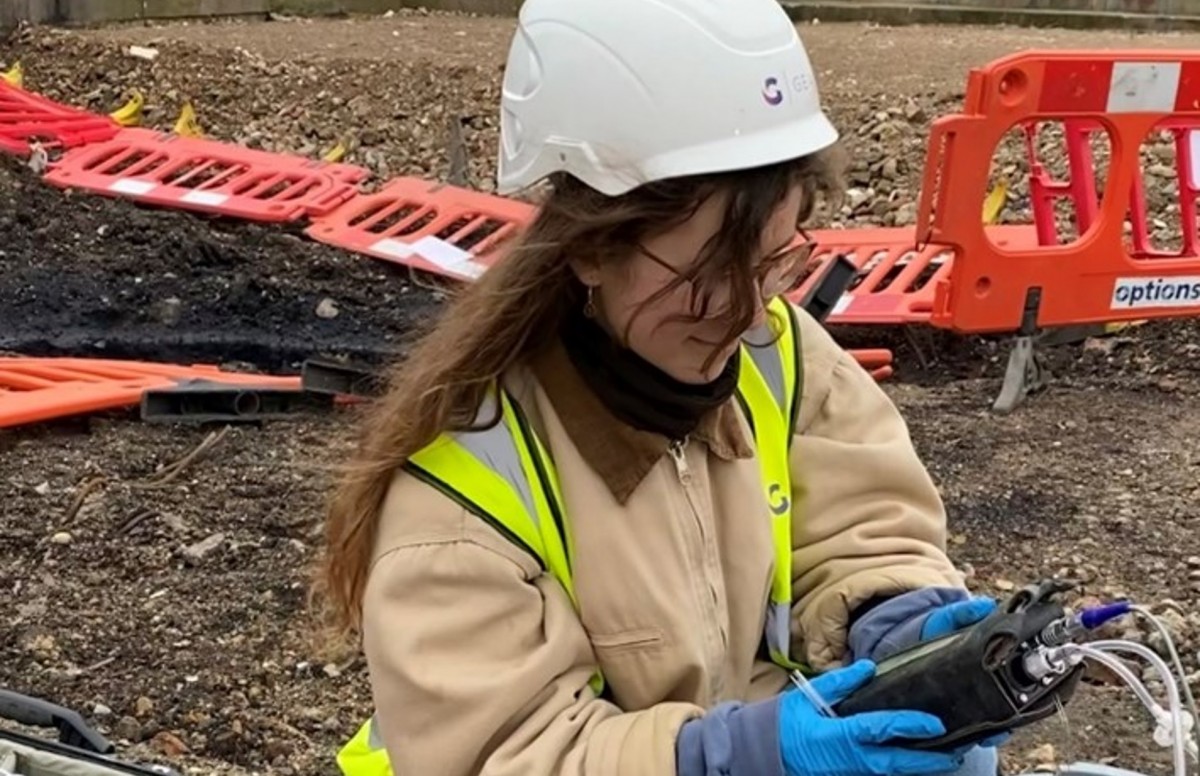The Basic Principles Of Geotheta
The Basic Principles Of Geotheta
Blog Article
The Geotheta Diaries
Table of ContentsFascination About GeothetaGeotheta Fundamentals ExplainedAll about GeothetaNot known Facts About Geotheta
They team up with civil engineers, architectural engineers, designers, and various other specialists to integrate geotechnical considerations right into the total project design and building and construction procedure. This calls for reliable synergy, control, and interaction to ensure that the geotechnical facets line up with the task objectives and meet governing demands.Mining & Materials Engineering: Principles of boring, penetration prices, and elements affecting the option of drilling method. Characteristics of dynamites, firing systems and blast patterns. Blasting techniques in surface area and below ground operations. Special blowing up methods at excavation boundaries. Resonance and noise control. Mechanical and continual methods to fragmentation, consisting of longwall shearing and fullface boring.
Integrated analysis of fragmentation and comminution procedures. Provided by: Mining & Products Design.
The smart Trick of Geotheta That Nobody is Talking About
Bachelor's level programs in civil, geotechnical, geological, and ecological design normally last four years and consist of basic education and learning training courses in English, social science, and the liberal arts, along with training courses in innovative maths, architectural geology, and liquid mineralogy. (https://www.dreamstime.com/ianhammond2191_info)
Geotechnical engineering entails the assessment of the dirt and rock problems at a specific site, and their effects for the development of that website. As most frameworks count on the ground for assistance, it is without surprise that a thorough understanding of the ground conditions, and the viability of structure systems, are vital to the long-lasting security and efficiency of the structure or framework.
Being experts in the examination of geological developments and ground practices, geotechnical engineers execute clinical examinations and screening to comprehend the influence these geological developments might have on the design and building of building, civil and framework projects. This experience is critical for the layout and construction of buildings, roadways, tunnels, dams, bridges, and water and sewer system.
The geotechnical team at Douglas Partners regularly consult with designers, layout designers, programmers, and home builders to make recommendations on style and advancement proposals to guarantee that the developed frameworks are accordingly made for the ground problems. The layout of footing systems needs to take into consideration the weight of the framework, the capability of the ground to support that weight with each other with motion tolerances and efficient building and construction.
Geotheta Things To Know Before You Buy
This job is substantially streamlined by the use our Douglas Map geospatial platform which makes this details easily easily accessible in an easy to utilize web browser interface. A geotechnical designer will route the boring of boreholes and examination pits to accumulate soil and various other samples, and also analyze surface features and ground exposures to create a geotechnical model of the subsurface conditions.
Depending on the job type and ground problems encountered, laboratory testing may among various other points examine strength, compressibility, sensitivity and/or permeability of dirt and rock samples. After this information is accumulated and collected, the outcomes are utilized for a geotechnical model of the website, which is normally provided as areas throughout the site.

A geotechnical investigation naturally can only examine the ground problems at the locations drilled or dug deep into. Natural variants in soil and rock problems can occur throughout a site and in between examination areas. It is consequently good technique that the geotechnical designer be retained throughout building of the task to supply on-site confirmation that the ground conditions experienced are constant with the assumptions and suggestions offered in the geotechnical investigation record.
Getting The Geotheta To Work
Geotechnical designers use their in-depth expertise of dirt and rock to evaluate danger and fix issues on varied framework projectsGeotechnical design is a specialist branch of civil engineering which takes a look at the behavior of planet products and the application of dirt and rock mechanics. Tailings Engineer. As a geotechnical engineer, you will certainly analyze the physical, mechanical and chemical residential or commercial properties of dirt and rock in order to design structures, keeping structures and earthworks
Geotechnical design is very closely connected to and overlaps with, both design geology and ground engineering - https://www.ted.com/profiles/47432098. It's feasible to specialise in geotechnics or work for a geotechnical company however be recognized as a design rock hound or a ground engineer. As a geotechnical designer, you'll require to: build and preserve partnerships with clients and various other experts entailed in the website, throughout each projectmaintain security criteria on website bear in mind price ramifications when you make recommendationsstudy geological maps and airborne pictures from a series of resources and from different time periodsexamine building plans to see exactly how feasible they are based upon your understanding of the siteinvestigate threats or geological hazards for the sitesearch for environmentally sensitive features, such as landfill start to create valid and interpretive ground modelsplan area investigationsdrill and evaluate samples of bedrock, dirt, groundwater and extra materials monitor various other experts on sitesolve technological concerns as they arise, such as unexpected structures at drill sitesmonitor problems during and after building to make certain frameworks are steady in the a knockout post short and long termadding data collected on website to your first researchcreating geotechnical computations, drawings, and 2 or three-dimensional computer system models interpreting the datamaking recommendations regarding the proposed use of the site

Report this page